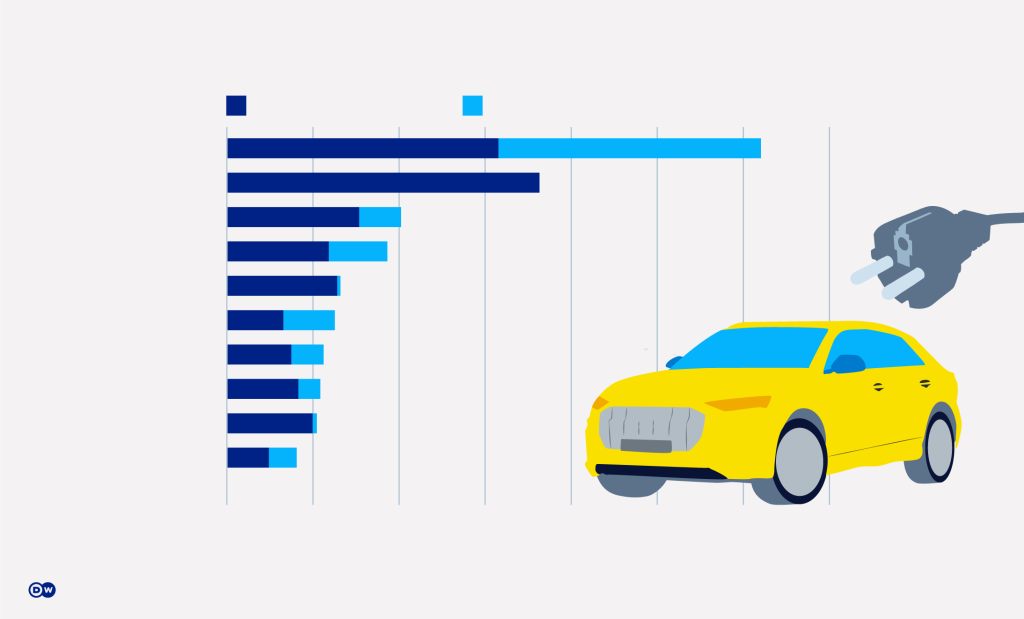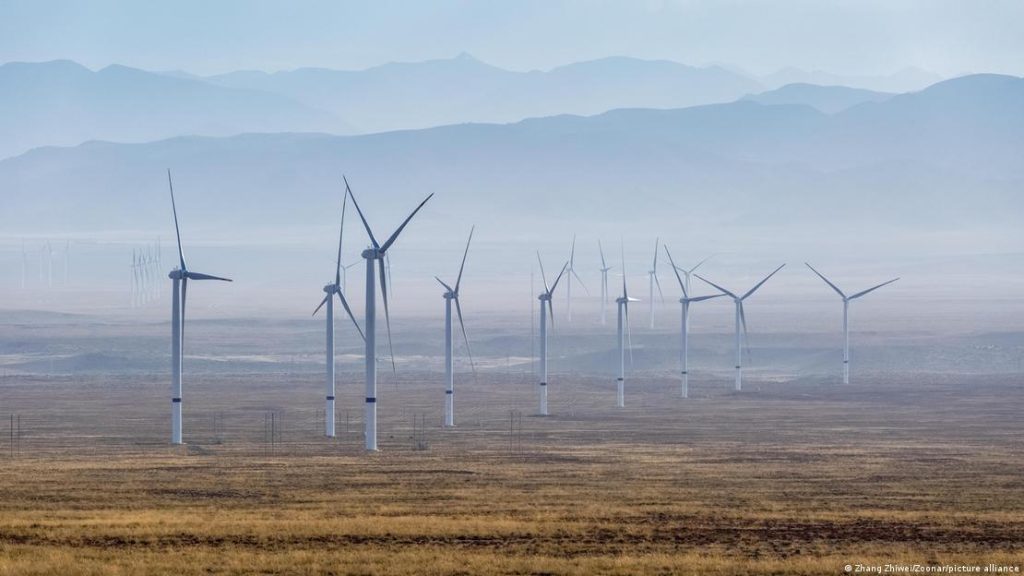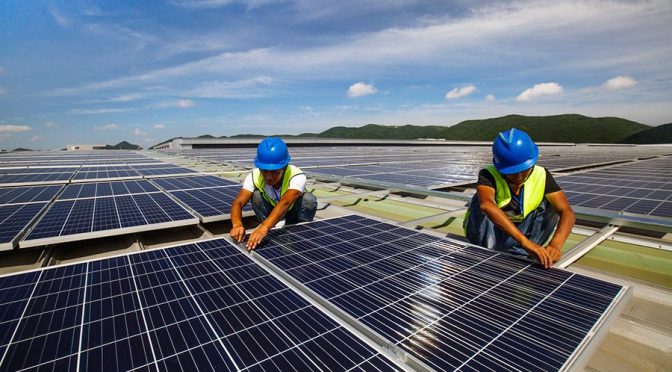China faces increased scrutiny from the West for its aggressive export practices: overcapacity and huge subsidies. The United States and the EU are working to ensure that their clean energy sectors are not eliminated by unfair competition.
United States Treasury Secretary Janet Yellen warned China last weekend against overproducing clean-energy products such as solar panels, wind turbines and electric vehicles (EVs) in the race to slow climate change.
During a trip to China, Yellen said the country’s unfair trade practices — dumping artificially cheap products on global markets — were a threat to US businesses and jobs. Washington is considering imposing higher tariffs and closing trade loopholes if Beijing maintains its existing policy.
Chinese firms can often undercut their Western counterparts for many reasons, including cheaper labor and economies of scale. But they also benefit from very generous state incentives, which help to make foreign rivals uncompetitive.
Chinese subsidies tower over Western aid figures
“Chinese subsidies are pervasive,” Rolf Langhammer, former vice president of the Kiel Institute for the World Economy (IfW-Kiel), told DW. “They encompass almost all industries and are far larger than any EU or US subsidies.”
Beijing’s industrial subsidies are on average three to four times higher than in Organisation for Economic Co-operation and Development (OECD) countries — sometimes up to nine times as much. A report published this week by IfW-Kiel estimated that industrial subsidies amounted to €221 billion or 1.73% of China’s gross domestic product in 2019. Another study put annual subsidies typically at around 5% of GDP.
The IfW-Kiel report revealed how Chinese subsidies for domestic green-tech firms had increased significantly in 2022. The world’s largest EV maker, BYD, received €2.1 billion, compared with €220 million just two years earlier. Support for wind turbine maker Mingyang rose from €20 million to €52 million.
In addition to the huge subsidies, the report’s authors noted, Chinese producers also benefit from preferential access to critical raw materials, forced technological transfers and less domestic red tape than their foreign competitors.
China ups EV exports as global demand eases
“US and European nervousness is coming at a time when electric vehicle demand [in the West] has faltered a bit,” Brad W. Setser, a senior fellow at the Council on Foreign Relations, told DW. “It now looks like China is going to be an even bigger exporter of electric vehicles going forward.”

Last year, China sold more than 100,000 cars overseas, most of which were EVs or plug-in hybrids. The country’s EV exports rose 70% in 2023 and were valued at $34.1 billion. Europe was the largest recipient of Chinese EVs, nearly 40% of electric cars exported.
In October, the European Union began a probe into whether it should impose higher tariffs on Chinese-made EVs to “offset state subsidies and to level the playing field.” Brussels currently levies a 10% tariff on Chinese-made vehicles and, according to media reports, a retroactive 25% tariff could be introduced as early as July. Industry analysts say the move would make medium-sized Chinese sedans and SUVs more expensive than their European equivalents.
Washington already levies a 27% tariff on Chinese EVs and is also preparing to raise them further to bolster its auto industry.
Despite concerns over tariffs and future access to Western markets, Chinese producers have vowed to increase output. The world’s biggest battery maker, CATL, said it would press ahead with its aggressive expansion plans. BYD told investors recently that it targeted a 20% sales increase this year.
Beijing’s subsidies do trickle down
Langhammer noted that the West also benefits from the Chinese subsidies, as consumers can buy cars at a lower price while companies can access cheaper Chinese parts. Despite the threat from cheaper Chinese EVs, he said, some automakers were skeptical about the EU probe into Beijing’s subsidies as firms such as Germany’s Volkswagen and US EV leader Tesla receive them, too.
“They [European car producers] say they can compete with China. German automakers have a quarter of their foreign direct investment in China and also benefit from Chinese subsidies and they fear retaliation,” Langhammer said, referring to possible tit-for-tat measures Beijing may levy in the event of higher EU tariffs.
Washington is concerned that Chinese firms will use loopholes in US trade deals with Mexico and Canada to circumvent higher import tariffs by producing Chinese-branded EVs in the two neighboring countries. New legislation has been tabled to counter that.
Solar crisis a warning for EV sector
Europe’s green-energy sector has already taken a beating from cheap Chinese imports of solar panels, which have wiped out several domestic players and prompted an EU anti-subsidy probe. Though EU countries installed record levels of solar capacity last year — 40% more than in 2022 — the vast majority of panels and parts came from China, according to data from the International Energy Agency.
“There’s definitely a case that China is dumping its excess solar panels on the global market,” Setser said. “The Chinese factories are producing between two and three times as many solar panels as the world currently uses,” which he said was leading to “fire-sale prices.”
This week, the European Union announced a separate anti-subsidy probe into China’s wind turbine industry. The country seeks to dominate global supply chains and is a partner in several wind parks in Spain, Greece, France, Romania and Bulgaria.
In a further development, Chinese state-owned train maker CRRC was forced to withdraw from a tender in Bulgaria in February after Brussels announced a probe into the subsidies that it receives from Beijing.
China’s well-worn strategy for market dominance
European Competition Commissioner Margrethe Vestager described China’s playbook for dominating green-energy sectors during a speech at Princeton University this week. Noting how China first attracts foreign investment through joint ventures, she said the country was “not always above board” in the way it acquired green technological know-how. China then closed its own market to foreign firms before exporting excess capacity to the rest of the world at low, subsidized prices, she said.
Beijing has accused the US and EU of using protectionism to try to halt the country’s economic advance. China is on course to overtake the United States as the world’s largest economy by the 2040s, and Chinese leaders have boosted investments in high-tech industries to help the country move up the value chain.

Image: Zhang Zhiwei/Zoonar/picture alliance
China’s wind turbine producers are also being investigated for unfair subsidies
Analysts argue, however, that China can’t succeed without strong and stable markets for its products, which should give US and EU leaders the edge in negotiations with Beijing.
“We should prepared to play hardball with China,” Langhammer told DW. “For electric cars and green technology, the US and EU are the most important foreign markets, and the Chinese need access.”
Nik Martin, dw.com
Edited by: Uwe Hessler


